nutrition assessment
Overview
- Key elements of nutrition assessment
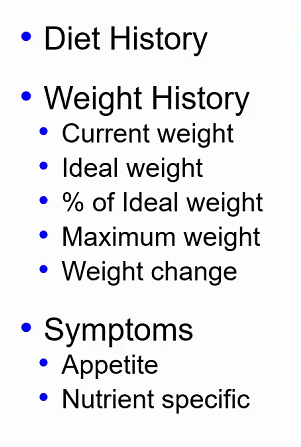
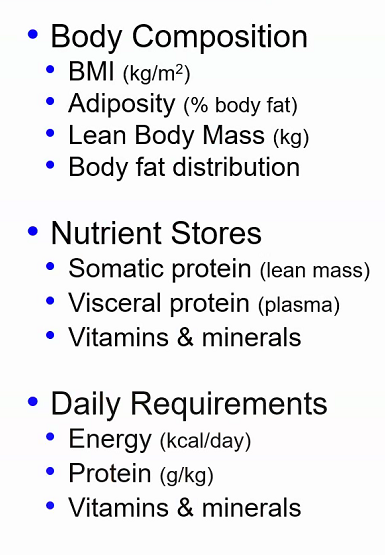
Social History
- access to food
- financial access: can afford?
- mobility: can obtain?
- preparing food
- who cooks
- can patient cook, how often?
Diet History
- specific diet?
- gluten free, low carb, keto, paleo, vegan
- food intolerance, allergies
- lactase def, fructose intol, red meat (a-gal)
- dining out, how often
- 24 hour diet recall, calorie count inpatient, food diaries
- what you ate for breakfast, lunch, dinner yesterday
- vitamins and supplements
PMHx
- GI illnesses preventing absorption
- oropharynx: dysphagia, tooth extractions (do you still have molars)
- stomach: PUD, chronic nausea, gastroparesis
- intestine: diarrhea, celiac dis, crohn's
- chronic illnesses
SHx
- stomach: ulcer operations, resection, bypass
- intestine anastomoses
- cholecystectomy
Symptoms
- appetite increased or decreased
- edema as sx of depleted albumin storage
- pica: urge to chew ice
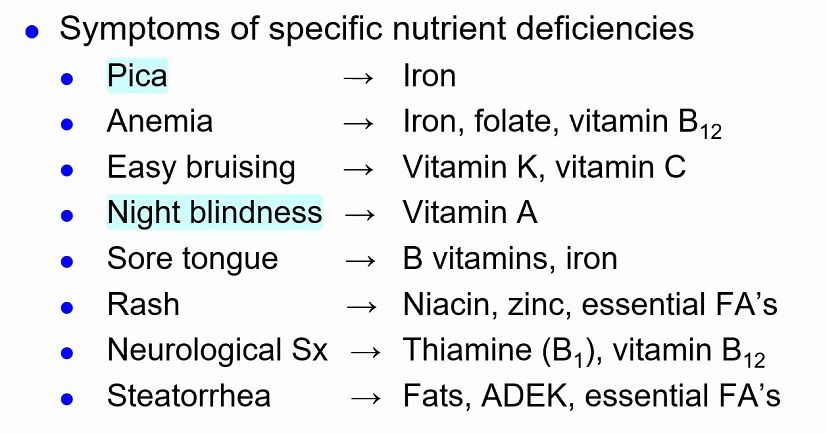
Weight Hx
- current weight, BMI
- ideal body weight
- estimate using weight after finishing high school (where when they finished road to adult)
- Hamwi method
- NHANES survey
- % ideal body weight: body weight should be +- 10% IBW
- maximum lifetime weight
- desired weight
- recent change in weight
BMI
- weight/height kg/m2
- surrogate for adiposity (fat mass/total mass)

Adiposity
- bioelectric impedance: signal sent from one part to another. Fat is insulator
- DEXA: in research setting
- underwater weighing: uses buoyancy of fat
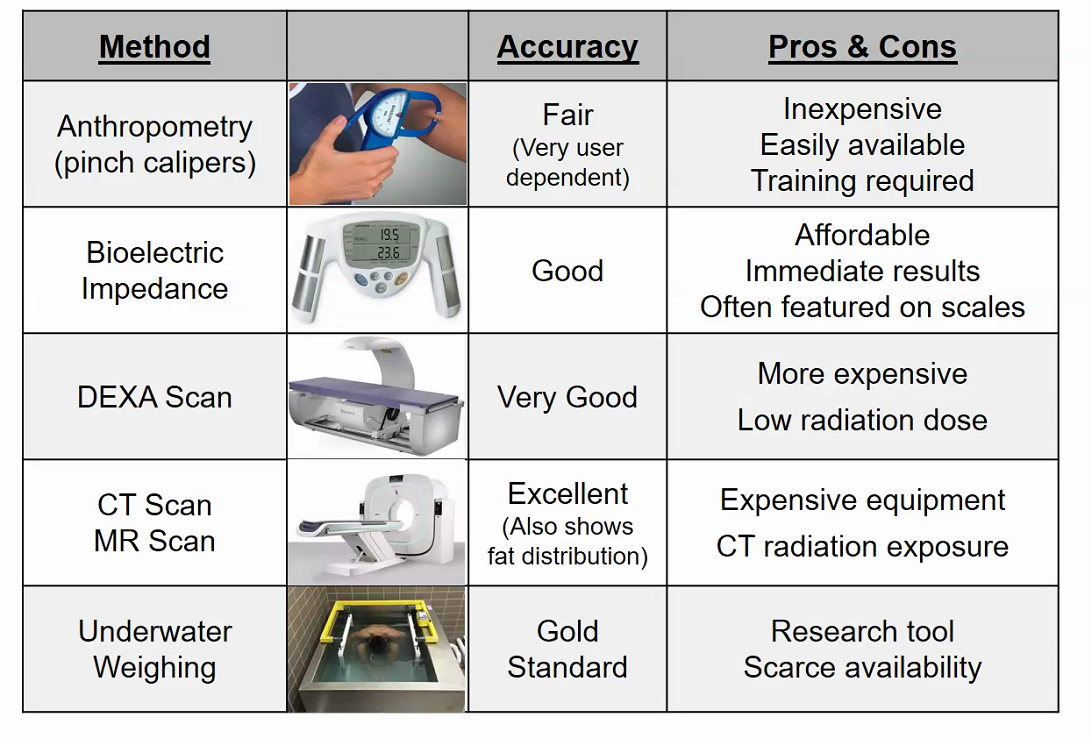
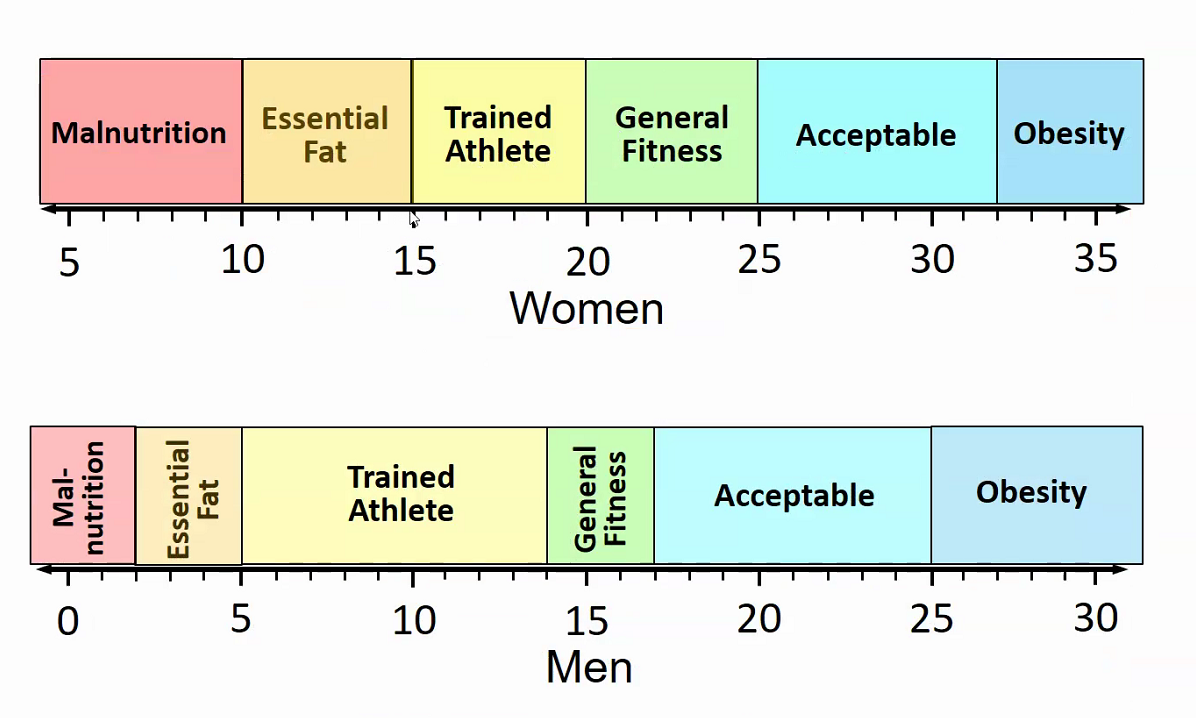
fat distribution
- uses waist/hip ratio as surrogate for central obesity
- waist circumference
Longitudinal weight history
- most dangerous: emergency if loses more than in box
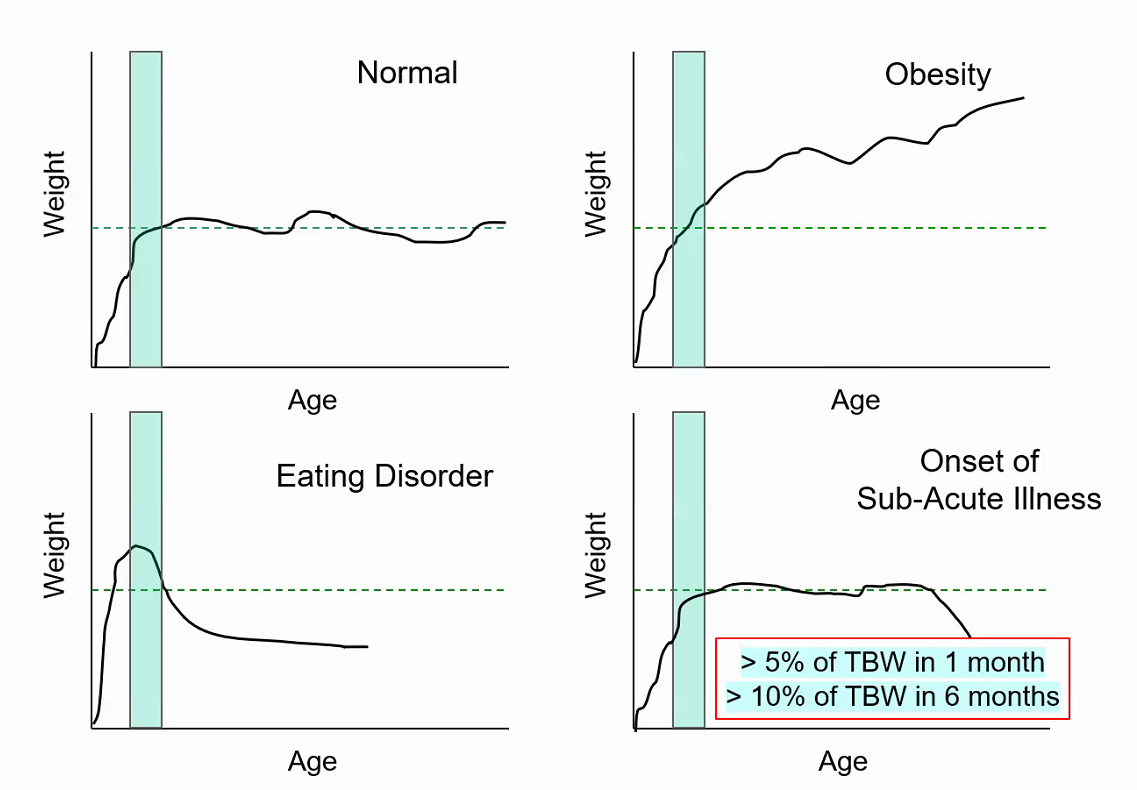
Daily energy requirements
- Harris-Benedict Equation: gender, weight, height, age
- indirect calorimetry: measures O2 consumption, CO2 consumption
- rule of thumb:
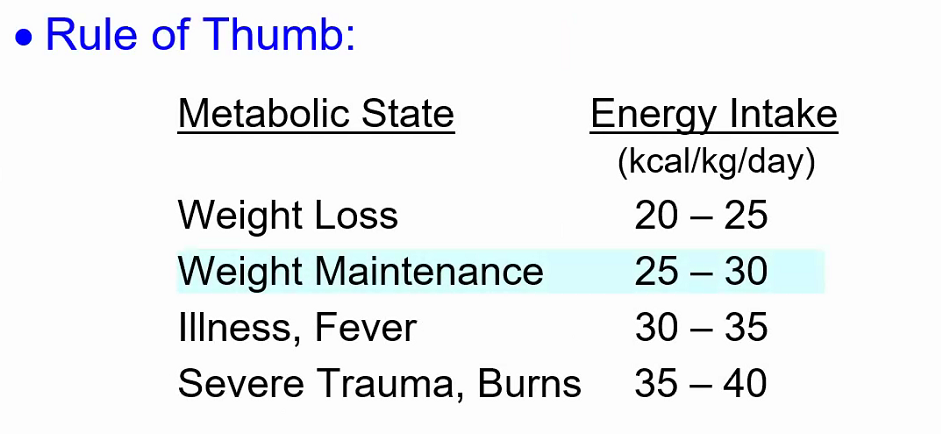
Protein requirements
- lean body mass (estimates for somatic protein store)
- plasma protein as surrogate to measure visceral protein
- albumin: half life 3 weeks. Negative acute phase reactants
- prealbumin: half life 2-3 days, also -APR
- nitrogen balance: calorie count (cumbersome)
- rule of thumb:
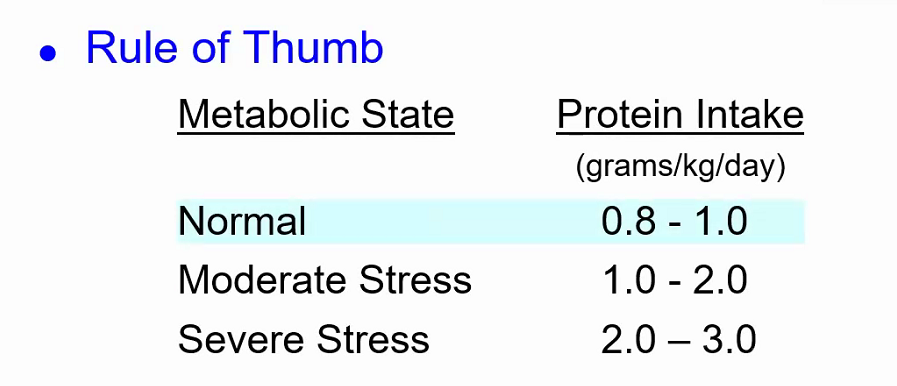
Vitamin and mineral
- water soluble: B12, thiamine, folic acid
- fat: ADEK, INR
- iron storage
- macro minerals: electrolytes
- trace minerals: Cu, Co, etc.
Links to this note








